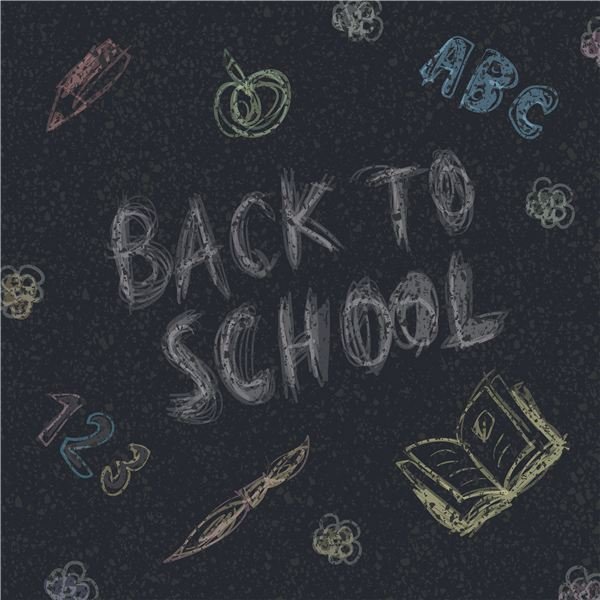Why Does School Typically Start in or Near the Fall Season?
Working on the Farm
Originally, it was thought—like an old wives’ tale—that children took summers off school because they needed to help work on the farm. Ken Gold, assistant professor at City University New York suggests that historically, kids in rural areas actually helped the family plant crops and gardens in the spring and took fall off to help bring in the harvest. It was actually in the city where children went for 248 days out of approximately 260 workdays in a typical year.
Diverse Educational Opportunities
If you begin to study schools around the world, you will see many variables such as village schools and city academies. While many schools have computers and science labs, there are probably as many that lack such technology. Can you imagine going to a school where there are no desks or books? One established similarity is that children go to school all over the world, in Kenya, Peru, Australia, India—everywhere.
A Few Reasons for Summer Break
Well, yes, it is hot. Many older school buildings do not have air conditioning. Can you imagine how sleepy and lethargic a room of people who are sweltering can become?
In addition, people needed some sameness called “standardization.” If some kids were to take time off in winter while other families want to go on holiday in the summer but a single mother needs to work more in the spring, it could become a mess. Guidelines are needed to make the days uniform.
Shall We Make a Full Stop or Skip Right Through?
Some people believe students don’t get enough time off; that they do not fall behind the learning curve during summer break and that too much of a good thing leads students to be nervous. These challengers believe students suffer from the anxiety of leaving their parents and they benefit from relaxing more and shaking off the perils of peer pressure, bullying and teachers checking their work all the time. Are American children really falling behind other countries in academic excellence?
Down Under Schools
Australia has seasons that are opposite of North America, so how is their school different? In Australia, the school term begins at the end of January and ends in mid-December—fully 200 days a year but the term is divided into about nine weeks with two weeks off in-between. They attend from 9:00 am to 3:00 pm and wear both uniforms and hats. Elementary children often sit outside for reading or to go over rules. There may be kookaburras in the trees, but the students often use email.
In Kenya, where many live in small huts, the schoolrooms may have tin roofs and students often sit on straw mats and do chores such as, sweep the floors or cut the grass. They will attend school six days a week from January to November alternating with thirteen weeks in school and eight weeks off. Their materials are scarce.
Rainforest children in Peru get to school by canoe, floating down the Amazon River, and their schoolroom is a hut with a dirt floor. Young adults teach lessons such as reading, writing and geography. Children learn mostly from their parents about fishing, collecting fruits and how to grow manioc, rice and bananas.
Northern Climes for School
The Inuits are tribespeople in Canada and Alaska. Their school year begins in August and ends in May. They study English and their native language, science, math and computers. The tundra can be harsh and winters brutally cold—and in a land of ice and snow, dogsledding, skiing and skating are popular. Sustaining life by fishing and creating clothes from furs and skins is paramount and dictates when education can be performed.
Russian students start school September 1 and the academic year ends in May. Their typical day runs from 8:30 am until 3:00 pm, much like American schools. Their education is only mandatory until the eleventh grade. After that, teenagers often choose between going to a vocational school to learn a trade, or hammer away at entry examinations in preparation for university. More than half the population is college educated.
China schools are open from the beginning of September to the middle of July for six days a week. Their long days, from 7:30 am typically until 5:00 pm makes their education seem extreme, but there is respite with a two-hour lunch period. Math and computer technology are favored subjects. There are also summer classes and many study for examinations during this time. They are highly athletic as children, often competing in gymnastics, Ping-Pong and soccer. The children also enjoy kite-flying, jump rope and video games.
Who Has the Best Education?
For many years, the best education has come from Finland according to Pearson, a top educational company. Other reports such as those from The Organization for Economic Cooperation and Development (OECD) now report Finland as second in more recent years only to South Korea.
One reason they excel is that their teachers are highly educated and highly valued. They also know the significance of the benefits of education and more attention is put to learning than almost anything else—often referred to as a “culture of education.”
References
- Jackson, Ellen. It’s Back to School We Go! First Day Stories From Around the World. Minneapolis: Millbrook Press, 2003. Book.
- Pearson: The Global Index of Cognitive Skills and Educational Attainment 2014
- The Guardian: Classrooms Around the World in Pictures
- [Windows to the Universe: Inuit Culture, Traditions and History](/tools/Inuit lives: http:/www.windows2universe.org/earth/polar/inuit_culture.html)
- Fact Monster™ Database, © 2007 Pearson Education, Inc. All rights reserved.
- Travel Channel: Back to School Around the World
